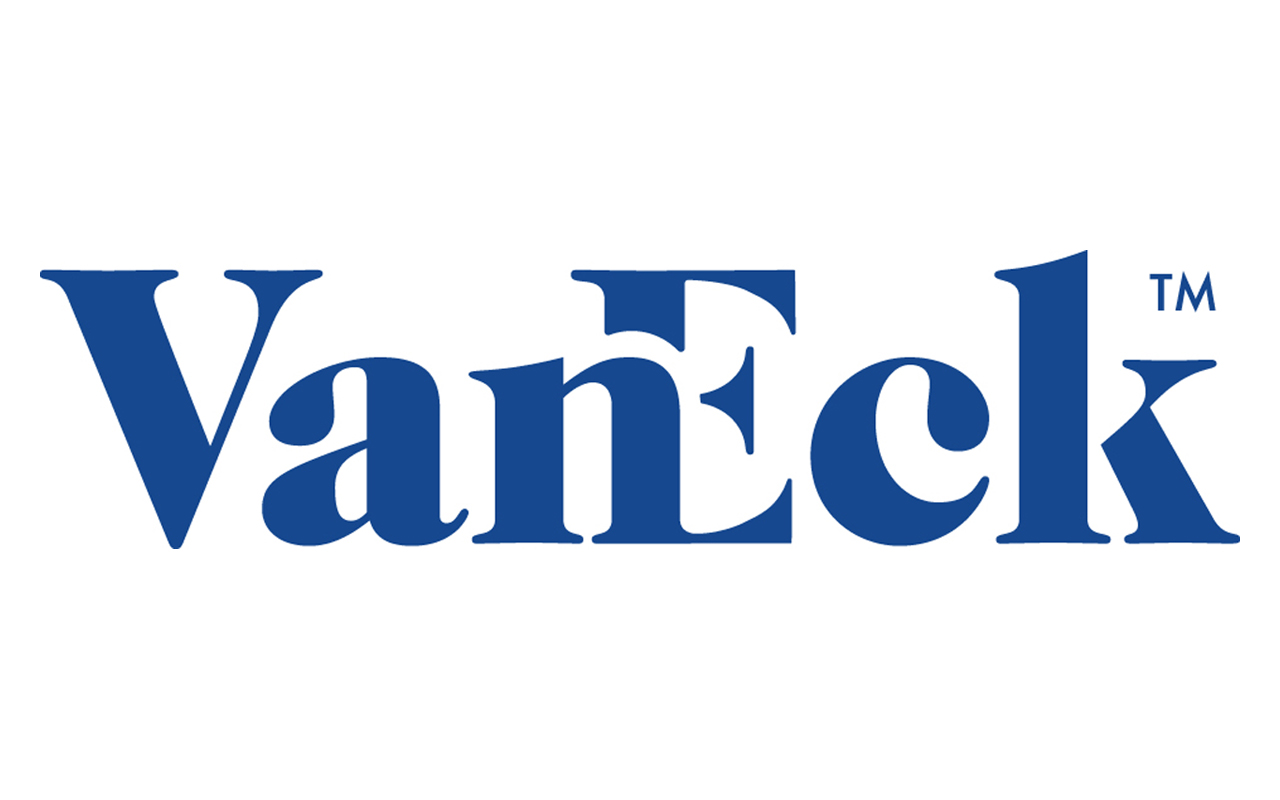The 7 Best ETFs for Retirement Investors
Mutual funds almost go hand-in-hand with retirement investing.


Mutual funds almost go hand-in-hand with retirement investing. And why not? The modern mutual fund predates exchange-traded funds (ETFs) by more than six decades. Most 401(k) plans hold nothing but mutual funds. So it’s reasonable to link one with the other.
But don’t sleep on exchange-traded funds. As you’ll soon find out, while many of the best ETFs out there are tactical strategies and great trading vehicles, some of them are dirt-cheap, long-term buy-and-hold dynamos that can give investors what they need in retirement: diversification, protection and income.
Many (though not all) ETFs are simple index funds – they track a rules-based benchmark of stocks, bonds or other investments. It’s an inexpensive strategy because you’re not paying managers to analyze and select stocks. And it works. In 2018, the majority of large-cap funds (64.5%) underperformed Standard & Poor’s 500-stock index – the ninth consecutive year that most of them failed to beat the benchmark.
Today, we’ll look at seven of the best ETFs for retirement. This small group of funds covers several assets: stocks, bonds, preferred stock and real estate. Which ones you buy and how much you allocate to each ETF depend on your individual goal, be they wealth preservation, income generation or growth.
Data is as of Aug. 28. Yields represent the trailing 12-month yield, which is a standard measure for equity funds.

Vanguard High Dividend Yield ETF
- Type: U.S. dividend stock
- Market value: $24.3 billion
- Dividend yield: 3.2%
- Expenses: 0.06%
The conventional wisdom used to be that you should subtract your age from 100 to determine how much of your portfolio should be allocated to stocks. At age 50, you would be 50% in equities; by age 70, that would have dropped to 30%. Easy peasy.
In recent years, however, that rule has been kicked to the curb, and financial experts increasingly suggest hanging on to more of your stocks later in life. Why? Americans are living longer – a lot longer. Men’s average life expectancy has shot up from 67.1 years in 1970 to 76.1 years as of 2017. For women, it has jumped from 74.7 in 1970 to 81.1 years as of 2017.
And those are just averages. Reaching your 90s and even triple digits is a realistic scenario, which means your retirement funds may need to last decades longer than they once did.
- Vanguard High Dividend Yield ETF (VYM, $85.22) is a conservative way to remain in stocks during retirement. This is a broad collection of more than 400 mostly large-cap stocks that feature higher yields than their peers. Most of the top holdings are well-known for their dividends – Johnson & Johnson (JNJ), Exxon Mobil (XOM) and Procter & Gamble (PG) are among the numerous Dividend Aristocrats in the group.
VYM is a “conservative” stock fund because of its strategy. The Vanguard S&P 500 Index (VOO), for instance, is a blend of both growth and value, getting some of its returns from a modest yield (currently 1.9%) and price appreciation. Vanguard High Dividend Yield is more value- and dividend-oriented, sacrificing potential price growth for more substantial income generation.
Learn more about VYM at the Vanguard provider site.

iShares MSCI EAFE ETF
- Type: International developed-market stock
- Market value: $57.5 billion
- Dividend yield: 3.1%
- Expenses: 0.31%
It’s vital to diversify your portfolio simply because no investment “works” all the time. Mark Pruitt, investment adviser representative with Strategic Estate Planning Services, wrote earlier this year for Kiplinger about the importance of geographic diversification – owning stocks from other countries – as exemplified by a mid-year 2018 report from Sterling Capital Management LLC:
“The report shows from 1998 to 2017 that 50% of the time the S&P 500 outperformed the international markets and the other 50% of the time the international markets outperformed the S&P 500.”
Enter the iShares MSCI EAFE ETF (EFA, $62.42).
The “EAFE” stands for “Europe, Australasia and Far East” and refers to so-called developed economies in those regions. Developed economies are typically highly industrialized, economically mature and have (relatively) stable governments.
EFA is one of the best ETFs you can hold for this kind of exposure. It’s a basket of more than 900 large-cap stocks from a dozen such countries, including Japan (24.3% of the portfolio), the United Kingdom (16.1%) and France (11.3%).
Many of these are multinational corporations you’ve probably heard of: Swiss foods giant Nestle (NSRGY), Japanese automaker Toyota (TM) and British energy giant BP plc (BP) dot this ETF’s top holdings. And while it’s a blended fund (both growth and value), many of these large-caps yield more than their American counterparts, leading to a much more substantial annual dole than the S&P 500.
Learn more about EFA at the iShares provider site.

Vanguard Total World Stock ETF
- Type: All-world stock
- Market value: $16.5 billion
- Dividend yield: 2.3%
- Expenses: 0.09%
The Vanguard Total World Stock ETF (VT, $72.64) is one of the best ETFs to buy for the truly spartan investor – someone who wants quite literally a whole world of stock holdings without having to buy four or five funds to get it.
In fact, our Steven Goldberg calls VT “the only stock index fund you’ll ever need.”
Vanguard Total World Stock ETF puts roughly 8,200 stocks at your fingertips from all reaches of the planet. America? Check. Developed markets? Check. It even has a decent allocation of about 10% of its assets in emerging markets – higher-growth though sometimes less sturdy economies such as China and India.
About 56% of the portfolio is invested in U.S. stocks; in fact, only one non-U.S. company (Nestle) makes the top 10 holdings. After that, there are decent-size holdings in countries such as Japan (7.5%), the United Kingdom (5.0%) and China (3.2%), but it has holdings in dozens of other countries, including small allotments to the Philippines (0.2%), Chile (0.1%) and Qatar (0.1%).
VT is a true one-stop shop for equities, it’s extraordinarily cheap for what it provides, and for now, it yields a little more than the broader U.S. market.
Learn more about VT at the Vanguard provider site.

iShares Cohen & Steers REIT ETF
- Type: Real estate
- Market value: $2.4 billion
- Dividend yield: 2.5%
- Expenses: 0.34%
Real estate investment trusts (REITs) are a slightly different critter than traditional stocks. These are a creation of Congress that came to life in 1960 specifically to give everyday investors access to real estate. It’d be difficult for most people to round up the millions of dollars it would take to buy and lease out, say, an office building or a strip mall. But just about any retail investor can shell out a few hundred bucks for some shares.
REITs are helpful to retirement investors for a pair of reasons. For one, REITs by their very design are obligated to pay out at least 90% of their taxable profits as dividends to shareholders. As a result, real estate tends to be among the top-yielding market sectors, and a great source of income for retirees.
Also, real estate tends to be uncorrelated with U.S. stocks – in other words, they don’t always move the same way, which means REITs sometimes perform well when U.S. stocks don’t. That’s a benefit of diversification. Ben Carlson, over at A Wealth of Common Sense, showed that from 1978 through July 2018, a 75%-25% blend of the S&P 500 and a REIT index outperformed each index individually. “This is not an enormous improvement by any means,” he writes, “but combining the two assets saw higher returns than the REIT index and lower volatility than the S&P.”
The iShares Cohen & Steers REIT ETF (ICF, $118.06) is one of the best ETFs for this purpose – and one that we’ve focused on before when seeking out funds for market crash protection. It blends the expertise of real estate specialist Cohen & Steers with the scale of iShares (which allows it to charge relatively lower fees).
This tight 30-stock portfolio invests in the dominant players in a number of different property types. American Tower (AMT) provides the telecommunications infrastructure that the U.S. and several other countries need to keep our smartphones connected. Welltower (WELL) is a leader in senior housing and assisted living real estate. And Public Storage (PSA) … obviously, the name says it all.
A curious note about ICF is that it yields less than most other REIT ETFs. But its emphasis on high quality delivers superior price performance that makes it a total-return winner over most time periods.
Learn more about ICF at the iShares provider site.

Vanguard Total Bond Market ETF
- Type: Intermediate-term bond
- Market value: $234.7 billion
- SEC yield: 2.3%*
- Expenses: 0.035%
Bonds – debt issued by numerous entities, from the U.S. government to giant corporations to small municipalities – have a place in many portfolios, especially retirement accounts. That’s largely because they dole out fixed distributions that retirees can rely on as income.
And again, it helps to have another uncorrelated asset. From Kiplinger’s Eleanor Laise:
“For retirees, bond funds should generally act as ballast, helping you withstand market volatility and giving you stable assets to tap when your stock holdings are down.”
Why bond funds, instead of individual bonds? Well, for one, they’re more difficult to research than many stocks, and the media barely covers them, so it’s not easy to know which individual debt issues to purchase. A bond fund takes that responsibility off your plate, and you get the added bonus of defraying risk by spreading it across hundreds if not thousands of bonds.
The Vanguard Total Bond Market ETF (BND, $85.16) is a bargain-basement ETF that holds more than 8,600 bonds. It’s considered an “intermediate-term” bond fund with an average duration of six years. (Duration is a risk measure for bonds; it essentially means that a one-percentage-point increase in interest rates will result in a 6% decline for the fund.)
BND invests across numerous types of debt – Treasuries (44.0%), corporate (26.8%) and government mortgage-backed securities (21.8%) make up the lion’s share, though it has sprinklings of corporate mortgage-backed and even foreign bonds. And all the debt it holds is “investment-grade,” which means the major credit agencies perceive all of these to have a high likelihood of being repaid.
Also, thanks to an expense drop this year, BND is now the lowest-cost U.S. bond ETF on the market.
*SEC yield reflects the interest earned after deducting fund expenses for the most recent 30-day period and is a standard measure for bond and preferred-stock funds.

SPDR Bloomberg Barclays 1-3 Month T-Bill ETF
- Type: Ultra-short-term bond
- Market value: $9.1 billion
- SEC yield: 1.9%
- Expenses: 0.1359%
Money market funds are primarily designed to protect your assets and earn you a tiny bit on the side. These funds invest in high-quality, short-term debt such as Treasury notes and certificates of deposit. They don’t yield much, but they’re low on risk, making them an ideal hidey hole during turbulent markets.
There are only a handful of money market ETFs, but the SPDR Bloomberg Barclays 1-3 Month T-Bill ETF (BIL, $91.58) is a solid and inexpensive choice among the higher-asset options.
You won’t find many smaller ETF portfolios out there. BIL holds just 15 extremely short-term Treasury debt issues ranging from 1 to 3 months at the moment, with an average adjusted duration of just 29 days.
How stable is this fund? Over the past decade, the gap from its highest point to its lowest point is a mere three-tenths of a percent. All it takes is a quick look at the chart to see the evident upsides and downsides of a fund like this.
You’ll miss out on any bullishness in the market, but your money will barely budge, no matter how dramatic the downturn.
Learn more about BIL at the SPDR provider site.

VanEck Vectors Preferred Securities ex Financials ETF
- Type: Preferred stock
- Market value: $675.7 million
- SEC yield: 5.4%
- Expenses: 0.41%
Preferred stocks have long been called a “hybrid” security that blends various aspects of common stocks and bonds. For instance, preferred stock does actually represent ownership in a company, like a common stock … but it usually doesn’t have voting rights, which bondholders lack too. Preferred stocks pay out (typically high) dividends that are often taxed as “qualified” dividends like many common-stock payouts … but these dividends often are fixed at a specific rate, much like a bond’s coupon.
From a practical standpoint, preferred stocks are an income play. They offer well-above-average yields often between 5% and 7%. But they typically don’t move much in either direction – if a company reports explosive earnings, its common stock might shoot higher, but its preferreds might barely budge.
This conservative, income-focused nature makes preferred stocks appealing to retirement portfolio. The VanEck Vectors Preferred Securities ex Financials ETF (PFXF, $20.13) is one of the best ETFs to buy to collect this kind of income.
Following the 2007-09 bear market and financial crisis, numerous “ex-financials” ETFs popped up in response to the beating banks took and the subsequent distrust that generated. PFXF, introduced in 2012, was one of them. Whereas most preferred-stock funds have large allocations to financial-sector preferreds, VanEck’s ETF eschews those, instead investing in preferred securities from utilities, REITs and telecoms, among other areas of the market.
Honestly? PFXF’s ex-financial nature isn’t really here nor there anymore. Banks are far better capitalized and regulated now than they were in 2007, so the risk of another near-collapse doesn’t seem as dire. But the reason PFXF’s 120-stock portfolio still holds up is its combination of higher-than-average yield and one of the lowest expenses in the space.
* Includes a four-basis-point fee waiver.
Learn more about PFXF at the VanEck provider site.
Profit and prosper with the best of Kiplinger's advice on investing, taxes, retirement, personal finance and much more. Delivered daily. Enter your email in the box and click Sign Me Up.
Kyle Woodley is the Editor-in-Chief of WealthUp, a site dedicated to improving the personal finances and financial literacy of people of all ages. He also writes the weekly The Weekend Tea newsletter, which covers both news and analysis about spending, saving, investing, the economy and more.
Kyle was previously the Senior Investing Editor for Kiplinger.com, and the Managing Editor for InvestorPlace.com before that. His work has appeared in several outlets, including Yahoo! Finance, MSN Money, Barchart, The Globe & Mail and the Nasdaq. He also has appeared as a guest on Fox Business Network and Money Radio, among other shows and podcasts, and he has been quoted in several outlets, including MarketWatch, Vice and Univision. He is a proud graduate of The Ohio State University, where he earned a BA in journalism.
You can check out his thoughts on the markets (and more) at @KyleWoodley.
-
 Forget FIRE: Why ‘FILE’ Is the Smarter Move for Child-Free DINKs
Forget FIRE: Why ‘FILE’ Is the Smarter Move for Child-Free DINKsHow shifting from "Retiring Early" to "Living Early" allows child-free adults to enjoy their wealth while they’re still young enough to use it.
-
 7 Tax Blunders to Avoid in Your First Year of Retirement
7 Tax Blunders to Avoid in Your First Year of RetirementA business-as-usual approach to taxes in the first year of retirement can lead to silly trip-ups that erode your nest egg. Here are seven common goofs to avoid.
-
 How to Plan for Social Security in 2026's Changing Landscape
How to Plan for Social Security in 2026's Changing LandscapeNot understanding how the upcoming changes in 2026 might affect you could put your financial security in retirement at risk. This is what you need to know.
-
 What Fed Rate Cuts Mean For Fixed-Income Investors
What Fed Rate Cuts Mean For Fixed-Income InvestorsThe Fed's rate-cutting campaign has the fixed-income market set for an encore of Q4 2024.
-
 The Most Tax-Friendly States for Investing in 2025 (Hint: There Are Two)
The Most Tax-Friendly States for Investing in 2025 (Hint: There Are Two)State Taxes Living in one of these places could lower your 2025 investment taxes — especially if you invest in real estate.
-
 The Final Countdown for Retirees with Investment Income
The Final Countdown for Retirees with Investment IncomeRetirement Tax Don’t assume Social Security withholding is enough. Some retirement income may require a quarterly estimated tax payment by the September 15 deadline.
-
 What to Do With Your Tax Refund: 6 Ways to Bring Growth
What to Do With Your Tax Refund: 6 Ways to Bring GrowthUse your 2024 tax refund to boost short-term or long-term financial goals by putting it in one of these six places.
-
 What Does Medicare Not Cover? Eight Things You Should Know
What Does Medicare Not Cover? Eight Things You Should KnowMedicare Part A and Part B leave gaps in your healthcare coverage. But Medicare Advantage has problems, too.
-
 12 Great Places to Retire in the Midwest
12 Great Places to Retire in the MidwestPlaces to live Here are our retirement picks in the 12 midwestern states.
-
 15 Cheapest Small Towns to Live In
15 Cheapest Small Towns to Live InThe cheapest small towns might not be for everyone, but their charms can make them the best places to live for plenty of folks.
-
 15 Reasons You'll Regret an RV in Retirement
15 Reasons You'll Regret an RV in RetirementMaking Your Money Last Here's why you might regret an RV in retirement. RV-savvy retirees talk about the downsides of spending retirement in a motorhome, travel trailer, fifth wheel, or other recreational vehicle.

